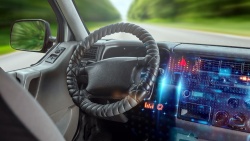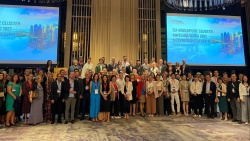Is it possible to reduce the impact on the environment in a systematic way? On May 5, 2020 we celebrated the webinar “Reducing environmental impact in oceans and seas” where we could discover the contributions of Deep Tech in reducing environmental impact in the marine environment, with the participation of Hidronav Technologies, Beamagine, AquaBioTech Group, Centro Tecnológico Naval y del Mar and Universidad Loyola.
Gawel Walczak · secpho. Webinar Introduction
Jose Collazo, Co-CEO de Hidronav Technologies. Advanced Technological System Development: From Custom Ultrasound Systems to Radiation Detectors.
Project STRATOS is a Ground Station for Continuous Monitoring of the Stratosphere Temperature through Measure
of Cosmic Ray Directional Flow. This system plans to staduy de stratosphere and Atmosphere by measuring the cosmic waves.
Santiago Royo, Business Development & Founder, Beamagine. High resolution multimodal imaging for object detection on the sea surface: mixing imaging modes for optimal detection
Key aspects of Beamagine LIDAR technology: solar radiation immunity, high resolution and real-time video data, solid-state design with large entrance pupil diameter, Class 1 eye-safe
Applications of LIDAR in ocean: Overwater detection wich uses Lidar and polarimietric image
Applications of LIDAR in maritime: Short/ Mid range obstacle detection, Path planning for risk avoidance, Close proximity navigation, Automated docking in harbors, Anti contact/collision
Michele Gallo, Aquaculture RAS Engineer, AquaBioTech Group. The potential applications of photonics technologies in Land-Based Aquaculture
AquaBioTech Group is an aquaculture consultancy that focuses on recirculating aquaculture systems (RAS) a small scale water treatment from fish farms. Tha applications of photonic technology in this field are: data collection and monitoring for system parameters.
Applications:water quality with optical sensors, Fish behavior and fish health, smart feeding technology for fish tanks, LED lighting (because light also affects hormons in fish, is important to have the right wave of light), early diagnosis, and bacteria monitoring in fish.
Iván Felis, Research and Development Manager, CTN-Marine Technology Centre. Artificial Intelligence in service of aquaculture
SICA is an intelligent control system developed by CTN that arises a solution to the problems of market systems and uses the following technologies: Underwater cameras, active acoustics and passive acoustics.
The objective is to detect when the fish are going to stop eating and warn to stop the feed supply. Main features: Passive acoustics, Artificial Intellinge and IoT(controlled via internet). This system is valid for any species and compatible with any type of feeder.
Pablo Millán Gata Engineering Department Director, Diego Luis Orihuela Espina, Associate Professor, Universidad Loyola. Autonomous vehicles for sustainability in water environments
Loyola University propose Autonomous water vehicles for monitoring. They can increase mobility, continuous monitoring, reactive capabilities, cooperative skills and reduced costs. The Loyola Proposal is afleet of coordinated autonomous vehicles that can monitor the water quality.
Roy Torgersen, CEO, Nido Robotics. Nido Robotics, Underwater Robots of the Future
They offer predictive maintenance through permanently deployed underwater robots for data collection and intervention. A solution that is fast, easy and safer for humans.
You can also check the previous secpho webinars on our website and the Youtube Channel.
We look forward to seeing you at our next secpho webinar!



